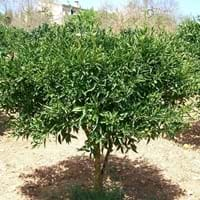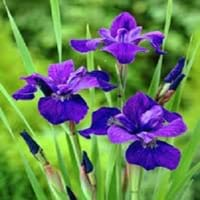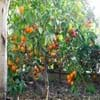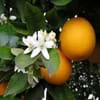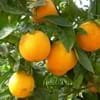Life Span
Perennial
Perennial
Origin
Southern Asia, India, Melanesia, Australia
Eastern Europe, Russia, Siberia
Types
etrog
Not Available
Habitat
Mediterranean region, Subtropical climates, Tropical regions
Grassland, Pastures, Swamps
USDA Hardiness Zone
9-11
3-8
Sunset Zone
H1, H2, 8, 9, 12, 13, 14, 15, 16, 17, 18, 19, 20, 21, 22, 23, 24
A2, A3, 1a, 1b, 2a, 2b, 3a, 3b, 4, 5, 6, 7, 8, 9, 10, 14, 15, 16, 17, 18, 19, 20, 21, 22, 23
Habit
Oval or Rounded
Clump-Forming
Flower Color
White, Purple
Blue Violet
Flower Color Modifier
Bicolor
Bicolor
Fruit Color
Yellow
Not Available
Leaf Color in Spring
Green, Dark Green
Green
Leaf Color in Summer
Green, Dark Green
Green
Leaf Color in Fall
Green, Dark Green
Green
Leaf Color in Winter
Light Green
Light Green
Leaf Shape
Ovate elongated
Long Narrow
Plant Season
Spring, Summer, Fall, Winter
Summer
Sunlight
Full Sun, Partial Sun
Full Sun, Partial Sun, Partial shade
Type of Soil
Clay, Loam, Sand
Clay, Loam, Sand
The pH of Soil
Acidic, Neutral
Acidic, Neutral, Alkaline
Soil Drainage
Well drained
Average
Bloom Time
Early Spring, Spring, Winter, Late Winter, Indeterminate
Early Summer, Summer
Tolerances
Drought
Drought
Where to Plant?
Ground
Ground
How to Plant?
Seedlings, Transplanting
Seedlings
Plant Maintenance
Medium
Medium
Watering Requirements
Needs less watering
Keep the ground moist but not water-logged, Requires regular watering, Requires watering in the growing season
In Summer
Lots of watering
Lots of watering
In Spring
Moderate
Moderate
In Winter
Average Water
Average Water
Soil pH
Acidic, Neutral
Acidic, Neutral, Alkaline
Soil Type
Clay, Loam, Sand
Clay, Loam, Sand
Soil Drainage Capacity
Well drained
Average
Sun Exposure
Full Sun, Partial Sun
Full Sun, Partial Sun, Partial shade
Pruning
Remove damaged leaves, Remove dead branches, Remove dead leaves
Remove damaged leaves, Remove dead leaves
Fertilizers
All-Purpose Liquid Fertilizer
All-Purpose Liquid Fertilizer
Pests and Diseases
Aphids, Citrus foot rot, Leafminers, Red blotch
Red blotch
Plant Tolerance
Drought
Drought
Flower Petal Number
Single
Single
Fragrant Bark/Stem
Yes
No
Foliage Texture
Medium
Medium
Foliage Sheen
Glossy
Matte
Attracts
Birds, Butterflies
Butterflies
Allergy
Mild Allergen
Not Available
Aesthetic Uses
Showy Purposes
Beautification, Bouquets, Landscape Designing, Showy Purposes
Beauty Benefits
Brightens the skin complexion, Good for skin and hair
Not Available
Environmental Uses
Air purification
Air purification
Medicinal Uses
Antibiotic, Antidote, Pulmonary afflictions, Recovering internal injuries
Not Available
Part of Plant Used
Fruits, Leaves
Flowers, Leaves
Other Uses
Used as a nutritious food item, Used As Food, Used for its medicinal properties
Decoration Purposes, Showy Purposes, Used as Ornamental plant
Used As Indoor Plant
No
Yes
Used As Outdoor Plant
Yes
Yes
Garden Design
Container, Edible, Feature Plant, Fruit / Fruit Tree, Hedges, Houseplant, Shade Trees, Topiary / Bonsai / Espalier, Tropical
Cutflower, Feature Plant, Foundation, Mixed Border
Botanical Name
CITRUS medica
IRIS sibirica 'Caesar's Brother'
Common Name
Citron
Siberian Iris
In Hindi
नीबू
Caesar's Brother Siberian Iris
In German
Zitrone
Caesars Bruder Sibirische Iris
In French
Citron
Frère Iris de Sibérie de César
In Spanish
Cidra
De César Hermano Siberian Iris
In Greek
Κίτρο
Καίσαρα Αδελφός Σιβηρίας Iris
In Portuguese
cidra
Irmão de César Siberian Iris
In Polish
Cytryna
Cezara Brat syberyjski Iris
In Latin
Chron
Caesaris Frater Siberian Iris
Phylum
Magnoliophyta
Not Available
Class
Magnoliopsida
Liliopsida
Order
Sapindales
Asparagales
Family
Rutaceae
Iridaceae
Clade
Angiosperms, Eudicots, Rosids
Angiosperms, Monocots
Tribe
Citreae
Not Available
Subfamily
Aurantioideae
Iridoideae
Number of Species
Not Available
Not Available
Season and Care of Citron and Caesar Siberian Iris
Season and care of Citron and Caesar Siberian Iris is important to know. While considering everything about Citron and Caesar Siberian Iris Care, growing season is an essential factor. Citron season is Spring, Summer, Fall and Winter and Caesar Siberian Iris season is Spring, Summer, Fall and Winter. The type of soil for Citron is Clay, Loam, Sand and for Caesar Siberian Iris is Clay, Loam, Sand while the PH of soil for Citron is Acidic, Neutral and for Caesar Siberian Iris is Acidic, Neutral, Alkaline.
Citron and Caesar Siberian Iris Physical Information
Citron and Caesar Siberian Iris physical information is very important for comparison. Citron height is 240.00 cm and width 180.00 cm whereas Caesar Siberian Iris height is 90.00 cm and width 60.00 cm. The color specification of Citron and Caesar Siberian Iris are as follows:
Citron flower color: White and Purple
Citron leaf color: Green and Dark Green
Caesar Siberian Iris flower color: Blue Violet
- Caesar Siberian Iris leaf color: Green
Care of Citron and Caesar Siberian Iris
Care of Citron and Caesar Siberian Iris include pruning, fertilizers, watering etc. Citron pruning is done Remove damaged leaves, Remove dead branches and Remove dead leaves and Caesar Siberian Iris pruning is done Remove damaged leaves and Remove dead leaves. In summer Citron needs Lots of watering and in winter, it needs Average Water. Whereas, in summer Caesar Siberian Iris needs Lots of watering and in winter, it needs Average Water.
